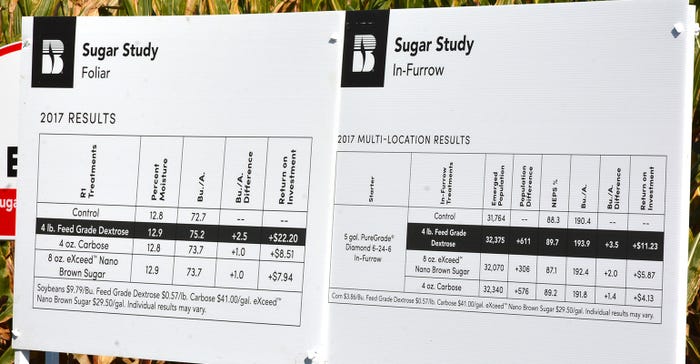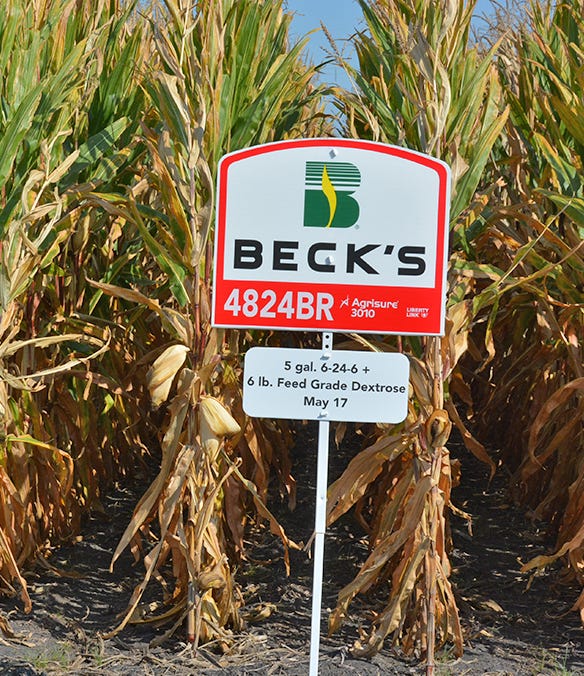
To help reduce fruit tree transplant shock, some nurseries add sugar to the water to feed the microbiology in the soil.
Agronomists at Beck’s Seeds thought about and wondered if sugar might have some effect on corn and soybeans. So, they planted a number of research plots at sites throughout Beck’s Midwest territory, including the new cooperator location, AgRevival, in Gibbon, Minn. The sugar research was one of several studies highlighted there during a Sept. 12 field day on-site.
Travis Burnett, one of Beck’s agronomists hosting the tour, offered some background on how the research got started.

SUGAR HIGH: The right weather and soil conditions help sugar provide some extra energy to soybeans and corn. Beck’s Hybrids is experimenting with several types of sugars.

Initially, agronomists mixed table sugar with water and were surprised to see double-digit yield increases. They decided to expand this research angle but needed to change sugar sources. Sugar wouldn’t stay in solution, so they switched to other sucrose sources — feed-grade dextrose, Nano Brown Sugar and Carbose. Burnett shared research data from 2017 which came from several locations, including Minnesota.
In-furrow vs. foliar
Trials were conducted in-furrow or foliar at V4 and R1. In-furrow sugar products were added to a 6-24-6 in-furrow starter. They evaluated different amounts of feed-grade dextrose — 4, 6 and 8 pounds per acre.
Burnett noted that in-furrow application, on average, worked better in corn while the foliar application, on average, worked better in soybeans. They recorded a difference of 2.5 bushels per acre between the control and the lower amount of foliar applied dextrose on R1 beans, and a 3.5-bushel-per-acre increase between the control and dextrose in-furrow on V4 corn.

NEW RESULTS: Beck’s 2018 research data are expected to be released in early December.

Burnett added Beck’s agronomists detected a pattern, too, in how in-furrow sugar was impacted by soil temperatures. Sugar worked better with later planting dates than early planting dates in 2017. Why? Warmer soil temperatures as the weather warmed. Sugar served as an energy source and affected biological activity, he said.
Specifically, in Minnesota in 2017, researchers observed that the cooler temperatures at planting on May 10 didn’t allow for microbial activity to benefit from in-furrow sugar. And with the foliar test plot, the soil organic matter was already high — so added sugar didn’t appear to enhance yield.
Burnett said results from 2018 will be released in Beck’s Practical Farm Research book. The online version will appear in early December, and the hard copy of the book will be mailed in mid-December.
For more information on Beck’s practical farm research, visit beckshybrids.com.
About the Author(s)
You May Also Like






